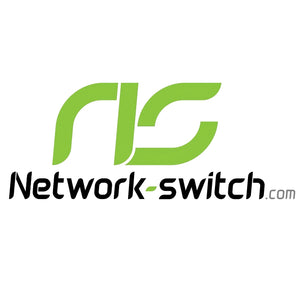Cisco Industrial Ethernet (IE) series: In the realm of industrial networking, Cisco’s Industrial Ethernet (IE) series provides a variety of ruggedized switches designed for operational technology (OT) settings. The IE 1000, 2000, 3000, and 4000 series devices are designed for different industrial needs ranging from basic connectivity to advanced networking capabilities. It is essential to know the differences between these series so that you know what solution to use for your industrial network.

Introducing Cisco IE 1000, 2000, 3000, and 4000 Series Industrial Switches
Cisco IE 1000 Series: Small, lightly managed switches for small-scale industrial use cases. Best for limited IT understandings data pickup like basic Layer 2 functionality and PoE (Power over Ethernet) support
Cisco IE 2000 Series– Ruggedized switches with advanced Layer 2 capabilities such as Microsoft Resilient Ethernet Protocol (REP) support. IP67-rated, suitable for rugged environments and ideal for applications with higher availability requirements.
Cisco IE 3000 Series: Modular switches with Layer 2 and Layer 3 functionality These switches have scalability and advanced features to support larger industrial networks and can support multiple VLANs and up to 26 Ethernet interfaces.
IE 4000 Series — High-performance switches with Gigabit Ethernet connectivity for demanding industrial applications. Heck, they provide easier security, greater bandwidth, and edge computing support and, thus, are optimal for large-scale deployments in rugged environments.
Comparison of IE 1000, 2000, 3000, and 4000 Series with 10 Factors
| Feature | IE 1000 | IE 2000 | IE 3000 | IE 4000 |
| Port Density | Up to 10 ports | Up to 16 ports | Up to 26 ports | Up to 20 ports |
| Uplink Options | 1G SFP | 1G SFP | 1G/10G SFP | 1G/10G SFP |
| Power Supply Options | 12-54V DC | 12-54V DC | 12-54V DC | 12-54V DC |
| Stacking Technology | No | Yes (REP) | Yes (StackWise) | Yes (StackWise) |
| Form Factor | Compact, DIN rail mountable | Compact, DIN rail or wall/pole mountable | Modular or fixed 19" rack-mountable | DIN rail mountable |
| PoE Support | Yes (PoE/PoE+) | Yes (PoE/PoE+) | Yes (PoE/PoE+) | Yes (PoE/PoE+) |
| Software Options | Basic Layer 2 | Enhanced Layer 2 | Layer 2/Layer 3 | Layer 2/Layer 3 |
| Performance | Entry-level | Mid-range | High-performance | High-performance |
| Management | Web GUI, SNMP | Web GUI, SNMP, CLI | Web GUI, SNMP, CLI | Web GUI, SNMP, CLI |
| Redundancy Features | Basic | REP | StackWise | StackWise, Dual power supplies |

Reviews and Ratings of Customers Here
IE 1000: Users appreciate its compact size and ease of deployment, making it suitable for small-scale applications. However, some have noted limitations in advanced features and management capabilities.
IE 2000: Known for its robust design and REP support to provide fault tolerance in adverse operating conditions. Others have called for more intricate Layer 3 capabilities.
Once again, these models could also have a broad application in all climate, where IE3000 is highly appreciated for its scalability and advanced features, ideally accommodating complex industrial networks. Its modular design has been hailed by users as a major benefit.
4000: The highest performing platform with the best-in-class security characteristics for large deployments. Its high bandwidth and edge computing support are appreciated by end users.

Learn Through Case studies and Real World examples
IE 1000 – It is used in small manufacturing companies and PoE applications for basic connectivity which is the most cost-effective solution for smaller IT environments.
IE 2000, uses REP for redundancy in transportation networks with resilient and brittle networks.
IE 3000: Deployed in vast industrial plants where customizable networking has become a crucial component in a broader, versatile network for complex systems.
IE 4000: Deployed in smart city infrastructure projects, providing high bandwidth and edge computing capabilities to manage large-scale deployments.
Future Roadmap and Updates
The last major update Cisco made was to the IE 3k and IE 4k series where they added dense multilayer switching and layer 3 capabilities. Specifically, the IE 4000 series is expected to offer enhanced edge computing capabilities and support for emerging industrial protocols
Where to Buy?
Cisco IE series switches can be purchased through authorized Cisco resellers or online marketplaces. Network Switch is your place to go for competitive pricing and a selection of models. com. Before you buy, make sure to check the authenticity of the products and the reputation of the seller.
Conclusion
Each model has its own set of features, so your selection will largely depend on your industrial network's requirements. For smaller applications or simpler use, the IE 1000 series is an economical choice, but when applications become more complex, and connectivity needs arise, there are the IE 2000 and 3000 series with extra functionality to transport across ruggedized environment.
Did this article help you understand network switches and how they work? Tell us on Facebook and LinkedIn . We’d love to hear from you!


 https://network-switch.com/pages/about-us
https://network-switch.com/pages/about-us


